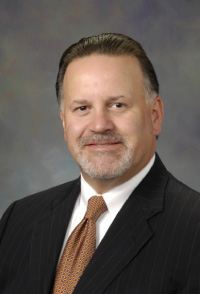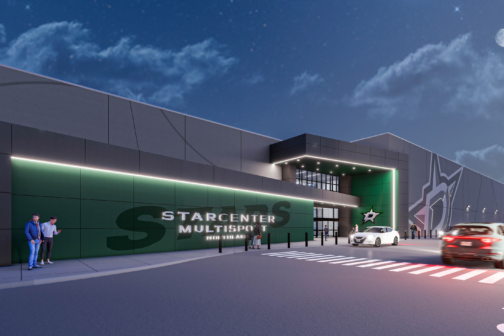The Dallas-Fort Worth area is one of the most significant high-tech business centers in the United States, with several global leadership brands. With about 3,000 technology companies and nearly 230,000 high-tech employees, DFW is arguably the second-largest technology business center in the country, behind California’s Silicon Valley.
In the past few years, several key players in the high-tech sector have boosted the local economy and strengthened the infrastructure of the North Texas technology community. Texas Instruments built a new wafer fabrication facility in Richardson in 2006, and has begun production as the world’s first semiconductor company to use a 12-inch silicon wafer platform to manufacture analog chips. AT&T relocated its headquarters to Dallas in 2008, and is now the largest high-tech employer in DFW. Cisco and Oracle have made numerous acquisitions in the region, expanding their existing footprint and adding jobs. Rockwell Collins has re-grown its defense business, Fujitsu Network Communications has moved production lines to here from Japan and the UK, and companies like Ericsson, Avaya, and Genband have grown from buying the remnants of Nortel. Huawei, HP, MetroPCS, Microsoft, TriQuint Semiconductor, and Verizon Wireless have also expanded their presence in North Texas during the past decade.
The diversity of tech companies locally may be the single most significant change since the bust of the telecom bubble a decade ago. This area, once dominated by telecom giants, is now a diverse industry of key players in various sectors. Today DFW is the global capital for IT services. Other key sectors here include wireless communications, semiconductors, software, and emerging technologies. The region’s four largest high-tech employers—AT&T, Verizon, TI, and Raytheon—represent communications, manufacturing, and defense. Also important to note is the increasing contribution that our key research universities are making to our high-tech growth.
High-Tech Roots in North Texas
The foundation of the North Texas technology industry dates back to the 1950s. Iowa-based Collins Radio, which later became Rockwell Collins, expanded into Richardson in 1951. Five years later, TI finished purchasing the 300 acres of farmland in Dallas on which its headquarters now sits. These two companies began hiring thousands of engineers that turned North Texas into the high-tech zone it is today.
Soon afterward, in 1962, Ross Perot Sr. founded Electronic Data Systems, which began our region’s ascension as a data processing, now IT services, global hub. A number of home-grown IT service companies followed EDS, including Perot Systems and Affiliated Computer Systems. In the 1990s North Texas became the telecom capital of the world and the Richardson area was dubbed the Telecom Corridor, with the arrival or expansion of telecommunications giants like Fujitsu, Northern Telecom, MCI, Alcatel, Ericsson, and AT&T.
Jack Kilby’s invention at TI of the integrated circuit in 1958, for which he ultimately won a Nobel Prize in 2000, certainly propelled the electronic revolution in America. Other notable inventions/innovations created here include commercial voice mail (VMX) and the ATM (Docutel).
Venture capital played an important role in the growth of the region’s high-tech sector. Sevin Rosen Funds, the other “16th Floor” players at Two Galleria Tower, UT-Southwestern, and StarTech Early Ventures were all early-stage funders of many startups that turned into major acquisitions for big-cap tech companies as well as successful IPOs.
The telecom bust that occurred from 2001 to 2003 was devastating to the high-tech sector and the local economy. Thousands of jobs were destroyed and high-tech giants crumbled. However, the bust also catalyzed the reinvention of an entire industry, which once again is thriving because of its strong roots and new-found diversity.
What Does the Future Hold?
Cloud computing, virtualization, wireless applications and content delivery, data-center expansions, biomedical, and nanotechnology are all areas of technology growth in North Texas. Aerospace and defense will continue to be dominant high-tech industries here as well.
Since 2005, the Texas Emerging Technology Fund has become the state’s most active early-stage investor in startups, funding more than 40 new companies here in North Texas alone. In addition, the fund has made grants to several North Texas universities to recruit world-class researchers who are turning inventions into products in fields ranging from analog chips (Dr. Kenneth O at the University of Texas at Dallas) to nano-electronics (Dr. Robert Magnusson at the University of Texas at Arlington and Dr. Yves Chabal at UTD).
This year, the Gartner research firm predicts a rise of 4.6 percent in global spending on technology products and services. That amounts to $3.4 trillion. Research indicates that more than half of all industry growth will come from new and emerging markets. If those projections come to fruition, the high-tech industry in North Texas will flourish.
Bill Sproull, president and CEO of the Metroplex Technology Business Council and the Richardson Chamber of Commerce, is also a Tech Titan Hall of Fame Award recipient.






